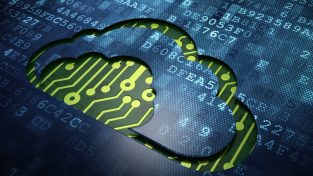In this episode of HxGN RADIO, we discussed the future of augmented reality and industry 4.0 with Daqri marketing director Reagan Wynne. To listen to more HxGN Radio episodes, visit our channels on iTunes, SoundCloud or Stitcher.
Welcome to HxGN Radio. This is your host Veronica Miller. Hexagon and DAQRI are both key players in augmented reality and industry 4.0. Hexagon is one of the largest data collectors in the industrial space with sensors varying from aerial to terrestrial from surveying to manufacturing intelligence. The DAQRI Smart Helmet is an innovative piece of hardware that includes a wide range of sensors and integrative technologies. The companies are announcing a partnership that will create a unique technology and address the current challenges of augmented reality. In today’s episode we are talking to Reagan Wynne who is marketing director at DAQRI.
VM: Thank you for joining us today.
RW: Thank you for having me.
VM: Let’s start by telling our listeners about DAQRI.
RW: So DAQRI is an augmented reality company based in downtown Los Angeles although we have offices worldwide, and we’re working with some of the top fortune 100 companies to bring augmented reality hardware and software to a multitude of industrial environments including oil and gas, aviation and everything in between. Our core product is DAQRI Smart Helmet which is the first wearable human machine interface and this brings information to workers where they need it and when they need it.
VM: So when you say wearable human interface, what exactly does that mean?
RW: So a lot of equipment on factory floors or in facilities has a human machine interface already. These panels that are on the front of these different pieces of equipment or the information that’s being sent back to the control room. What we’re doing is we’re taking all of that data that’s already being gathered and we’re centralizing it to the worker. So the worker is wearing the helmet, the worker is moving through the environment and the information is being displayed on top of the real world where they can see it. I might need to take a step back and explain augmented reality to your audience.
RW: So augmented reality is… Alright let me just take it even a further step back. People are familiar with virtual reality which is amercing people completely into a virtual world so that you feel like you are completely separated from the real world. Augmented reality is the flip side of that. You want to keep one foot firmly planted in the real world. So what we do is take digital information and lay it on top of the physical world so that it becomes contextually relevant and accessible to the user. In a work environment this could be anything from guided work instructions to interfacing with a remote expert to having a series of checklists you know something very simple that’s just like do task A, do task B, go over here like those directions can lead to increased efficiency, improved safety, reduced errors, all of the above.
VM: And that’s all in real time?
RW: All in real time.
VM: And what are the industries that are currently using this sort of technology and specifically the DAQRI Smart Helmet?
RW: We have a wide variety of customers that cross multiple verticals, and we’re working currently with them in oil and gas, aviation to get their feedback about how the helmet can best suit them, and also how they will roll it out. The helmet is uniquely positioned as the first device kind have been designed with augmented reality in mind and the work environment in mind. So taking those two things together it’s really filling a need that these customers already have. The issue that we’re running into is not so much a number of units or the demand, it’s the change management. It’s how these companies decide to roll this out and how they can get their workforce to adapt to a new way of working. Those are kind of the challenges that are the ones we’re tackling today.
VM: So really the learning curve is the biggest hurdle to get over?
RW: Right, you’ll always see resistance to any sort of change where people are like “Oh, this is not the way I’m used to doing it.” So you have to kind of figure out how that part works plus each company has its own unique need for the helmet. So developing how we solve their problems for their business that’s the fun part.
VM: And so, as you mentioned in the beginning, Hexagon and DAQRI recently partnered. Can you tell us a little bit more about this partnership and what we can expect from it?
RW: Sure. So right off the bat it’s taking the visualization tools that Hexagon has created for industrial environments and giving that information to a worker so they can see schematics, they can see drawings, they can see that information right in the field or right in the factory or right in the facility. Moving forward some exciting things that are on the horizon would be taking sensor data and giving a worker information right where they are based not off of a piece of equipment or a target of some kind but where they are in the facility or where they are in the environment. That stuff is really exciting and I think that makes it a perfect partnership between Hexagon and DAQRI.
VM: Other than the one challenge that you mentioned with bringing the workforce into industry 4.0 what are the industry challenges this partnership will help address?
RW: Well I think… So some of the problems we are able to solve right away are guided work instructions which allow workers to reduce error. They are being lead step-by-step through the process and in fact sometimes they have to tick off that they’ve done the thing before they can move on to the next task. That allows for quality control and the actual work being done to happen at the exact same time. So you can imagine that something that’s high-mix, low-volume like building a plane or a ship. You can’t afford for there to be small errors because that one error can lead to big consequences. Another challenge or problem that we are able to help solve is an aging workforce and a new younger workforce that’s coming up that doesn’t necessarily have all the experience. They’re hungry, they’re eager. The aging workforce doesn’t want to stop but they’re maybe not able to be everywhere all at once. We can take those experts and pair via the remote expert application to that workforce. So you could have one expert in a central location talking to many folks out in the field and giving them guidance and giving them instructions and making sure that they pass on that knowledge to that workforce. And the final one is safety and there’s a bunch of different ways we do that. It can be everything from actually looking in the environment using sensors or thermal cameras to see what’s out there and do inspections that way, but that technology also works passively. So I could be moving through environment doing my guided work instructions, the thermal camera would be on and would see something getting very warm. In industrial environments things get warm often before they break. So if you saw that a motor was above a certain temperature of threshold or a pipe is running very hot you can be warned about that without ever looking for it. The helmet lets you know. Future tech that could go in to that side of it is an EG where we’re monitoring brain waves. So if someone’s stressed or they’re having sort of a cardiac event they’ll know what’s happening. That data can be reported back to a control center or to other workers in the field who can then assist that person. So that’s very exciting as well. Solving those kinds of problems will show, I think, immediate impact on people’s bottom line.
VM: Going off of that where do you see the future of the visualization industry going?
RW: So I think it’s more exciting than just industrial although that’s where we’re focused. We recently acquired a company called Two Trees Photonics which is now DAQRI Holographics. Their products are already in vehicles on the road today as heads of displays for Range Rover and Jaguar, and that’s really exciting because that means now we’ve moved out of the work environment and into the car. You could have a service engineer whose driving through the field take off his helmet after working on a piece of equipment and the data now goes into the car, tells him where his next assignment is. Also, he can be communicating back to other workers as well, and then it’s not a stretch to think that thing goes into your personal vehicles, and then it’s not further of a stretch say now goes into our home. And so now our whole life has AR everywhere. Where we’re using it in work, we’re using it on the road, we’re using it in the home and that’s kind of the most exciting thing is that we can bring this sort of data visualization, this concept of augmented reality everywhere to everyone.
VM: Yeah absolutely, the digital enhancement in the real world. So we covered a lot of ground today but what’s next for DAQRI?
RW: Well I think what you’ll see, which is kind of exciting to us, is that as the technology gets more advanced as we see like the power consumption go down, as we see components get lighter. I mean we talk about 5 years is the new decade. So change is happening way faster than we’ve been able to anticipate in the past. I think that’s where the excitement is going to be is that it’s not going to be just the kind of display modules and the things that we’re using today. The things that are coming are what are really exciting, and it’s hard to predict. You could ask me where we’re going to be in a year and we can accurately forecast, but you get into 3 years and the tech is moving so fast it will sound like science fiction. So I think the best thing is to say is stay tuned because there’s some really exciting stuff coming down the road.
VM: To our listeners you can learn more about Hexagon’s visualization solutions at hexagon.com. Tune into more episodes from HxGN Radio on iTunes, SoundCloud or Stitcher Radio. Thanks for listening.













![[PODCAST]: The Future of Visualisation](https://blog.hexagon.com/wp-content/uploads/2016/10/artworks-000190774912-zkl6py-t500x500-500x391.jpg)



